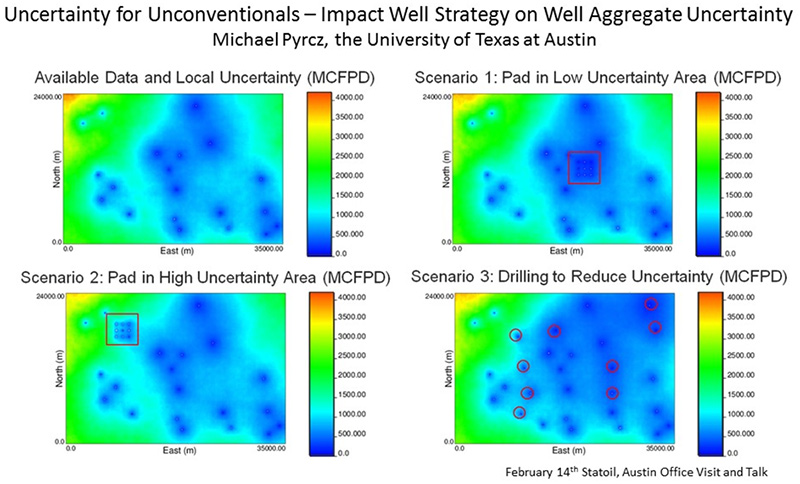Statistical Methods to Support Unconventional Decision Making
Presenter
Michael J. Pyrcz
Associate Professor
Petroleum and Geosystems Engineering
Abstract
New methods are required to support unconventional reservoir uncertainty modeling. Unconventional plays add additional complexity with greater uncertainty in direct reservoir measures (e.g., great uncertainty in permeability measures in low-permeability rock) and weakened relationships between currently measurable reservoir properties and production results (production mechanisms are less well understood). As a result, unconventional plays are often referred to as “statistical plays,” suggesting the reliance on statistical characterization of production distributions as a function of well counts. The application of the techniques described herein can be utilized to integrate all available information to determine appropriate levels of drilling activity to reduce resource uncertainty to an acceptable level.
Geostatistical approaches provide opportunities to improve the rigor in the dealing with statistical plays. Rigor is introduced through integration of methods that account for representative statistics, spatial continuity, volume-variance relations, and parameter uncertainty. Analog production data from US shale gas plays are utilized for demonstration. These datasets, after debiasing, are sources for analog production rate distributions and spatial continuity. Given these statistics along with a decision of stationarity, geostatistical workflows provide repeatable uncertainty models that may be summarized over a spectrum of model parameters, drilling strategy, and well counts.
These geostatistical methods improve the rigor of statistical-based approaches that are essential in statistical plays and the ability to integrate various information sources. Nevertheless, I do not recommend the reliance on only the statistical play approach, these statistical methods are best applied within an integrated workflow with participation from all related scientific disciplines utilizing all physics, data and interpretations.

